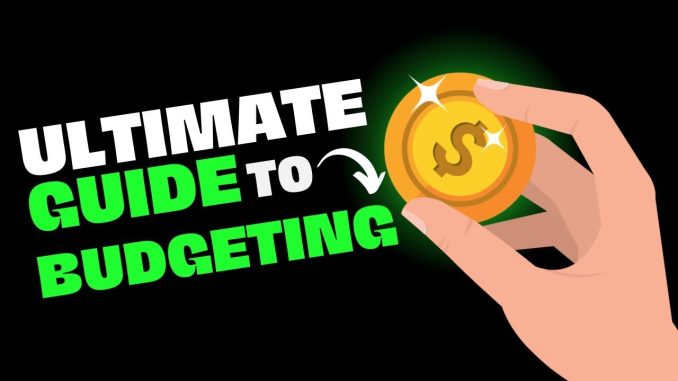
In the labyrinthine landscape of modern finance, where expenses often seem to multiply faster than income, the concept of budgeting can sometimes feel restrictive or even daunting. Many view it as a tedious exercise in deprivation, rather than the powerful enabling tool it truly is. However, for anyone aspiring to build wealth, achieve financial goals, or simply gain a clearer picture of their monetary flows, effective budgeting is not merely an option—it is an indispensable practice. Furthermore, in today’s technologically advanced world, a diverse array of budgeting tools has emerged to transform this often-challenging task into a more intuitive, insightful, and ultimately, rewarding experience, significantly enhancing one’s ability to save more money.
At its core, budgeting is about understanding where your money comes from and, more importantly, where it goes. Without this clarity, saving becomes an exercise in guesswork, often leading to frustration and unmet financial objectives. The first step in leveraging budgeting tools effectively is to commit to this fundamental principle of awareness. Whether you choose a simple spreadsheet, a dedicated budgeting app, or even a pen and paper, the objective remains the same: to track your income and categorize your expenses systematically. This initial data collection phase is crucial, as it provides the raw material for identifying spending patterns and areas where savings can be maximized.
One of the most accessible and customizable budgeting tools remains the **spreadsheet**, whether it’s Microsoft Excel, Google Sheets, or a similar program. For those who appreciate a hands-on approach and granular control, a spreadsheet offers unparalleled flexibility. You can create custom categories for income and expenses, design formulas to automatically calculate totals, track progress towards savings goals, and even visualize your financial data with charts. The beauty of the spreadsheet lies in its simplicity and the deep understanding it fosters as you manually input and analyze your transactions. This tactile engagement often leads to a more profound awareness of spending habits. For example, diligently logging every coffee purchase or subscription service can quickly reveal how small, seemingly insignificant expenditures accumulate into substantial sums over a month or year, highlighting specific areas for potential cutbacks.
Moving beyond manual entry, **budgeting apps** represent a significant leap in convenience and automation, making them incredibly popular for busy individuals. Apps like Mint, YNAB (You Need A Budget), Personal Capital, or PocketGuard can securely link to your bank accounts, credit cards, and investment portfolios, automatically categorizing transactions. This automation drastically reduces the time and effort required for data entry, allowing users to focus more on analysis and decision-making. Many of these apps offer intuitive dashboards that provide real-time insights into spending, alert you when you’re nearing budget limits in a category, and even project your financial future based on current habits. For someone looking to understand where their money goes without the painstaking manual effort, these apps provide instant clarity and actionable insights that can quickly pinpoint areas of overspending, thereby accelerating saving efforts.
A less commonly discussed but equally powerful budgeting tool is the **”zero-based budgeting”** philosophy, often integrated into apps like YNAB. This method requires you to assign every dollar of your income a specific job—whether it’s for bills, savings, debt repayment, or discretionary spending. The idea is that your income minus your expenses should equal zero, ensuring no dollar is left unaccounted for. This proactive approach to budgeting can be incredibly effective for maximizing savings because it forces intentional decision-making about every dollar. Instead of passively watching money disappear, you are actively directing it, often leading to a conscious allocation towards savings goals that might otherwise be overlooked.
To truly leverage budgeting tools to save more money, it’s vital to pair the tracking with **regular review and adjustment**. Budgeting is not a set-it-and-forget-it exercise. Financial circumstances change, unexpected expenses arise, and priorities shift. Dedicate a specific time each week or month to review your budget. How did you perform against your targets? Where did you overspend? Where did you underspend? This reflective process allows you to identify patterns, acknowledge successes, and make necessary adjustments to your categories or spending habits. Perhaps you consistently overspend on dining out; a review might prompt you to allocate more to groceries or plan more home-cooked meals. This iterative process of tracking, reviewing, and refining is what transforms a static budget into a dynamic tool for continuous savings growth.
Furthermore, budgeting tools empower you to **set and track specific savings goals**. Whether it’s a down payment for a house, a new car, a dream vacation, or building an emergency fund, visualizing these goals within your budgeting platform can be a powerful motivator. Many apps allow you to create specific savings “buckets” and show your progress towards each target. Seeing your savings grow incrementally provides a tangible reward for disciplined spending and reinforces positive financial behaviors. This goal-oriented approach shifts budgeting from a restrictive chore to an exciting journey towards achieving your aspirations.
In conclusion, the journey to saving more money is inextricably linked to effective budgeting, and modern budgeting tools have revolutionized this crucial financial practice. Whether you prefer the granular control of a spreadsheet, the automation of a dedicated app, or the intentionality of zero-based budgeting, the core benefit lies in gaining a crystal-clear understanding of your financial landscape. By consistently tracking income and expenses, regularly reviewing and adjusting your budget, and setting clear savings goals, these tools empower you to make informed decisions, curb unconscious spending, and actively direct your money towards building a more secure and prosperous future. The power to save more is not just about earning more; it’s about mastering where every dollar goes, and modern budgeting tools are your indispensable partners in that mastery.